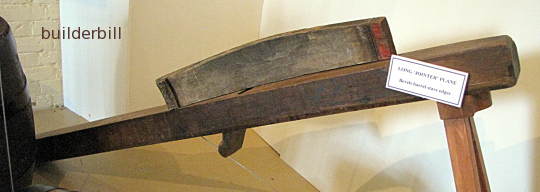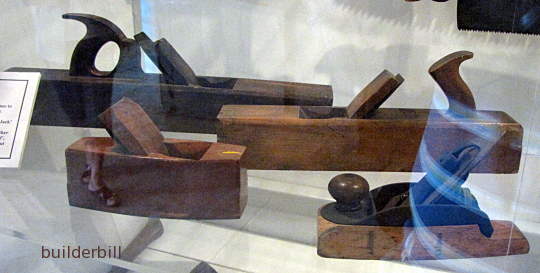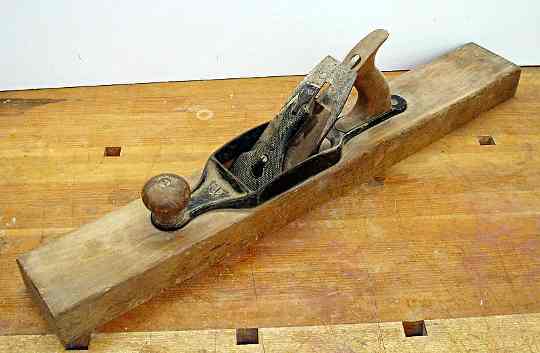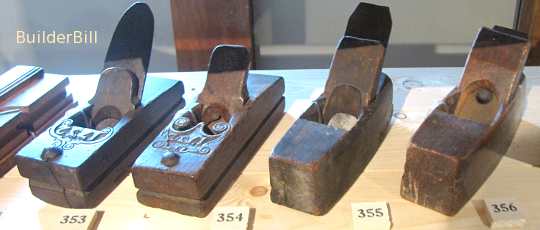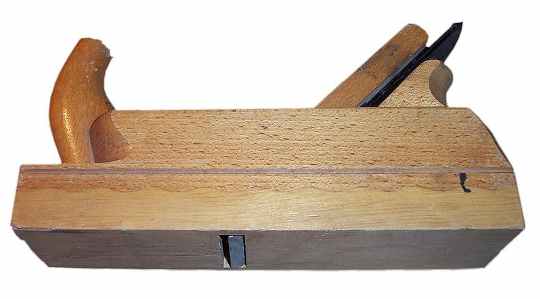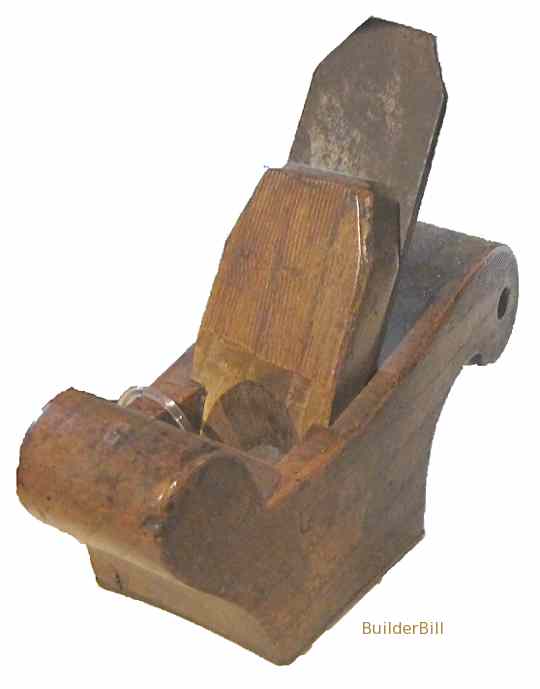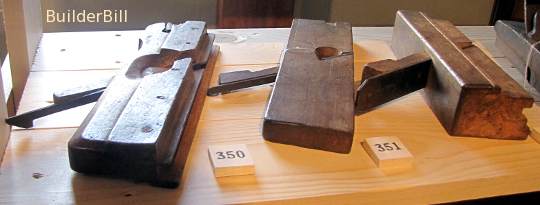 |
|||||||||||||||||
Graphical Construction Glossary >> Tools. >> Hand Tools >> Wooden Planes
Above is a photo that I took at the historic Royal Dockyard at Chatham in the UK. The planes were inside a glass case so apologies for the annoying reflections (including some old guy's striped shirt).
When metal planes started to become used in the middle of the 19th. century some manufactures started producing what is known today as transitional planes.
Following on from the previous photo there are two more small transitional planes and a couple of small wooden smoothers.
I served my time as an apprentice with a guy called Walt Sawyer. He was about 78 years old and still working when I last saw him. He only ever used wooden planes. Old Walt scorned all attempts to get him to buy a new "modern" steel plane. His old jack plane was ready for the scrap heap being worn down in depth to almost half of what it should be. One thing that always stands out in my memory is that there were indentations in the front sides of the plane at least 15 to 20mm deep caused by his fingers and thumb. That jack plane fit him like a glove and it was no wonder that he didn't want to lay it aside and start breaking in a new one.
When I first came to Australia after only ever seeing Pommie tools I was amazed at seeing German jack planes and smoothers very similar to the one above. I couldn't understand why the Aussie carpenters had taken to these wooden planes when they were introduced into the country by German migrants. I found out part of the reason one day when I was complaining about the quality of some Australian hardwoods. Rough as guts timber with strange outlandish name like blackbutt, iron wood and blue gum. How the hell do you work this stuff I asked an old chippy. Well the old guy said, "You throw a bucket of water on it and then flog the crap outta it with yer German jack plane." Only my opinion of course but this pattern of plane, the German Jack Plane and the German Smoothing Plane seem to be the only survivors of the vast array of wooden planes that used to be available. There are still new ones being made by specialist makers for a small market of fans.
When I were a lad in the 1950's we had a huge cabinet full of dozens of moulding planes like the ones above. If a new moulding turned up presumably someone would modify a stock design to make it. I never used them, they were already obsolete. Stanley had made and sold they combination planes like the 45 and 55 for years, but even they were being made obsolete in small shops by the use of spindle moulders and electric routers. It is good to look at these old planes, and there are hundreds of different patterns, but at the end of the day they are only used by enthusiasts or more often that not used as ornaments to a bygone age. (I feel a bit like that myself some days :-) If you didn't find exactly what you are looking for try this search tool that will search the site and the web. "What can be added to the happiness of a man who is in health, out of debt, and has a clear conscience? "When we build, let us think that we build for ever."John Ruskin 1819-1900 |
Hire Equipment  Furniture Fittings - Architectural Hardware - Electronic Locking Systems - Technical Hardware BuilderBill sponsorship Glossary Pages.Roof Glossary and Roofing Formwork Glossary and other tempory work. Hand Tools Glossary Power Tools Glossary Asbestos Glossary Woodwork Glossary Stair Glossary Concrete Glossary Masonry Glossary doors Glossary BuilderBill Books Building Maths  Stair Design  Asbestos Book |
||||||||||||||||
|
|
|||||||||||||||||
|
Please Note! The information on this site is offered as a guide only! When we are talking about areas where building regulations or safety regulations could exist,the information here could be wrong for your area. It could be out of date! Regulations breed faster than rabbits! You must check your own local conditions. Copyright © Bill Bradley 2007-2012. All rights reserved. |
|||||||||||||||||
